Naxalbari 50: Unforgotten!
A line snaking all the way to the main gate of Jogesh Mime Academy and then of course, a hall packed almost to the rafters. What an exhilarating sight. We started ‘Naxalbarir 50’, the monthly screening for May with an introduction by Dwaipayan.
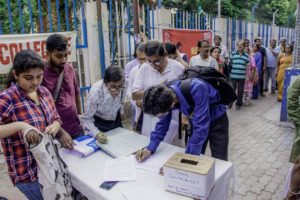
Eleven Adivasi peasant protestors, women and children, became martyrs, on 25 May, half a century ago. They were felled by police firing in Byangaijote, Naxalbari. On 19 May, nearly 400 people came together to reflect on the events then and their legacy now.
Music has an extraordinary power. It can shape movements. It can unite. It can compel. Many songs from the roots of the Naxalbari uprising were created by the rebels themselves, weaving in what they knew and felt, with the rhythm of the land and the soil—which is what they were fighting for. After a short video of Ajit Pandey, who sang Tarai Kande Go (The Terai Cries), Bipul and Anushree Chakrabarti began the program with five songs—that they had selected from hundreds of songs that came from the movement. Bipul da spoke of how the movement was not just a krishak andolan but one that shaped India’s political outlook in more ways than one. Their renditions of songs by Santanu Ghosh, Kamal Sarkar, Suresh Biswas, Dilip Bagchi and Sagar Chakraborty amongst others were powerful. Moving. They ended with the power-packed Ei Kada Payer Chhap from their own oeuvre.
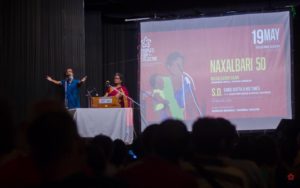
Many songs that came from the grassroots have been lost, fading away from public memory. The next segment focused on these songs, beginning with a field-recorded video of Shirril Oraon singing Naxalbari teo Krantikari sitting next to his mud house in Naxalbari. Rongili Biswas, accompanied by her group, sang a few of these songs (by Sukra Oraon, Hemango Biswas, Kalu Singh, Meghnad), explaining the use of rhythm and notes in each. She spoke of the music that was used in Utpal Dutt’s Teer and interspersed the songs with readings from Hemango Biswas’s observations and writings.
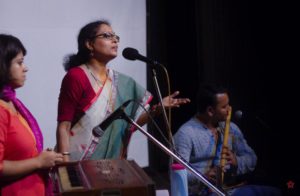
Following this, S.D. : Saroj Dutta and His Times, directed by Kasturi and Mitali was screened. This was the second time the film was screened in the city, the first time being at the annual Kolkata People’s Film Festival this year. The film traces not only the life of journalist, poet and revolutionary, comrade Saroj Dutta, and through that tells a story about the warp and the weft of the communist movement in India. It uses interviews, archival matter, archival sound recordings, extensive research and re- enactments to tell the story of an extraordinary man who used the power of language to critique the Left movement from within and speak out in support of the peasants whose armed struggle for their own land is the crux of the Naxalbari movement.
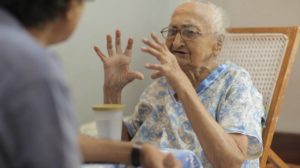
Dutta’s story began as a journalist and columnist with the Amrita Bazar Patrika. He supported his wife Bela’s involvement in the Tebhaga andolan, only later joining the Party himself. After leaving the Patrika, he wrote hard-hitting editorials for Swadhinata, translating important works such as Patrice Lumumba’s Dawn in the Heart of Africa. Even when in the undivided Communist Party, he was critical of many aspects of the Party and was jailed during Indo-china war in 1962. After the CPI split on the question of nationalism, Dutta joined the newly formed CPI (Marxist) and began writing under the pseudonym Shashanka for Desh-Hitoishi, and subsequently (after the second-split in the CPI (M)) Deshabrati; his words fierce, unafraid and unapologetic. He was critical of the way Inspector Sonam Wangdi’s death—which spurred widespread police atrocities, including the Byangaijote killings—was represented in the news and the way the Naxal movement was written about in the bourgeois dailies. Dutta was one of the key members of the All India Coordination Committee of Communist Revolutionaries that formed the Communist Party of India (Marxist-Leninist) in 1969.
Saroj Dutta was disappeared by the police in 1971. He was taken from professor Debiprasad Chattopadhyay’s home, where he was in hiding and murdered in the Kolkata maidan.
State records still say that he is ‘missing’.
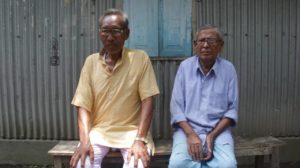
The screening of the film was followed by a brief discussion with the team that made the film and the audience. One of the members of the audience commented that Uttam Kumar’s role— largely glossed over and now forgotten— in being an eyewitness to Saroj Dutta’s killing in the Kolkata Maidan before dawnbreak on 5th August 1971 and the superstar’s subsequent deafening silence to come out with his testimony, should have been referenced, given the fact that the actor is so widely idolized. A few others also had a few suggestions that they shared with the film makers and producers.
While the audience was filing out, I overheard many of them discussing the importance of bringing the life and the role Saroj Dutta played, as a writer and revolutionary, into light. One of them said, ‘it is important for this (younger) generation to know the realities of what had taken place’. One of the reasons why the film was made, as Kasturi said, was to bring these incidents and the history back into the mainstream discourse.
Given the fact that the Naxal movement and the lives of revolutionaries is taught (if at all) in a very incomplete and biased manner in most schools and possibly not talked about at all amongst school going students, I personally believe that this would definitely spur a discussion. A discussion that is urgently and immediately needed given the number of State atrocities that we hear about on a daily basis.
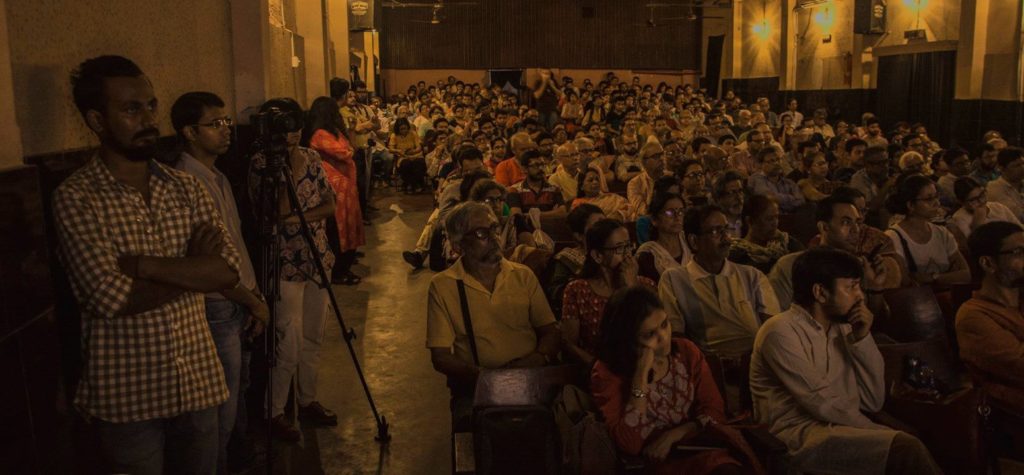
Conversations continued outside, people milling around the ever busy book stall. Even today, a few days after the screening, people are writing in with their thoughts, impressions, memories, and most importantly perhaps, emotions.
Songs speaking of a people’s movement, of tears and courage, of the right to one’s own land. A film that interweaves the story of one man’s life with that of the movement he wrote so eloquently about. State atrocities that are never acknowledged in the public domain. Fifty years have passed. Let these stories continue to be told and sung. For more than another fifty years.
Report: Paroma
Photographs: Kunal Chakraborty and Aniruddha Dey

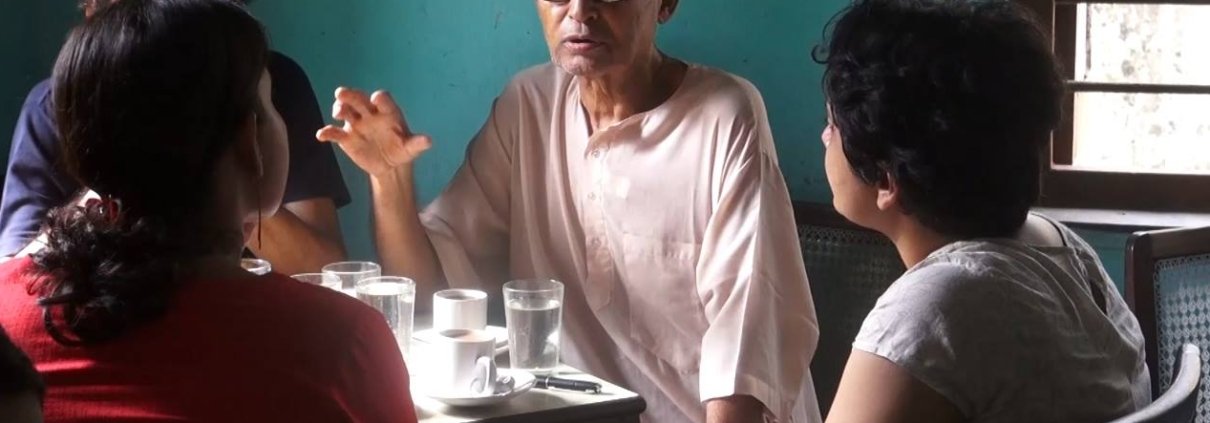

Leave a Reply
Want to join the discussion?Feel free to contribute!